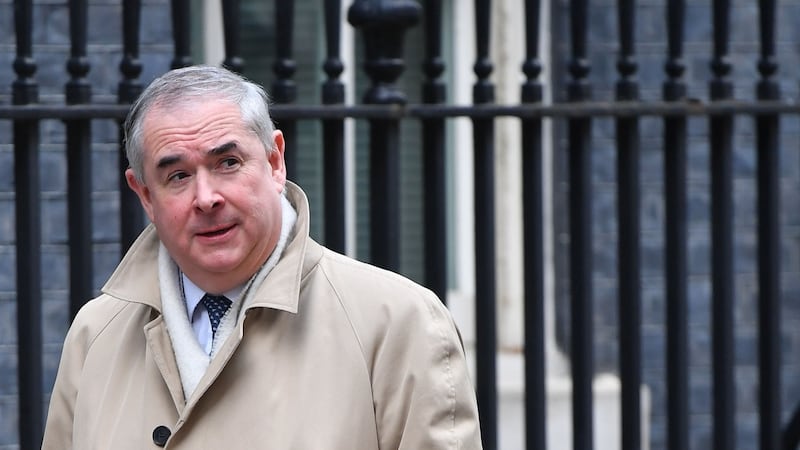As the Brexit drama heads towards next week's crucial House of Commons vote, the crunch issues now being fought over in Westminster are about what the withdrawal agreement will actually mean for Britain's future. Much of this reflects the same circular argument which has been going on since the Brexit vote. Monday's publication by the UK government of its legal position under the withdrawal agreement highlights how London hopes that the backstop agreement – to guarantee no hard Irish border – will only be used, at worst, for a short period. But just how to avoid the backstop, or end it if it comes into force, is far from clear, given the "red lines" which the UK has itself set down. The whole point of the backstop is that the UK cannot end it unilaterally – otherwise it is worthless.
Theresa May's government is under pressure to release the full text of the legal advice it received from the attorney general, Geoffrey Cox, on the withdrawal agreement and what it would mean, rather than the summary legal position document published on Monday. Ahead of next week's vote on the withdrawal agreement, reports over the weekend have said that the full advice warns that under the deal the UK could be trapped "indefinitely" in a customs union with the EU.
The possibility of the UK ending up in a customs union with the EU in the long term is due to the provisions in the withdrawal agreement for the Irish backstop – the guarantee that no matter what future trade arrangements are put in place, there will be no new hard border in Ireland. To help achieve this, the backstop deal stipulates that if no other way is found to avoid a hard Irish border by the time the transition period – the post- Brexit standstill – ends, the the whole of the UK will enter a customs union with the EU.
The backstop is due to apply “ unless and until” it is superseded by a subsequent agreement which achieves the same goal . This is outlined in the legal position document, which points out that both sides do not intend the backstop as a long-term solution and have promised to seek a long-term deal which renders it unnecessary, or obsolete.
However doing this is far from easy. If the withdrawal agreement comes into force, the only way to avoid the backstop – or give grounds to end it – would be to sign up to a really close trade deal,or agree to checks in the Irish Sea. Either of these routes is politically fraught. That this fact is now threatening a crisis in London suggests a very late dawning, or avoidance of , reality.
The Legal Position document outlines how, via procedures set down, the backstop could end. The withdrawal arrangement would be overseen by a Joint Committee which could recommend that the circumstances now justified no backstop. A disagreement would go to an arbitration panel, but it would only be likely to rule against one party or the other if it found they were operating in bad faith. And the backstop could only be rendered obsolete by “alternative arrangements for ensuring the absence of a hard Border.” And so we go back into the same circular argument.

Union
A customs union avoids tariffs on goods flowing between the EU and UK – and thus between Ireland and the UK. So no customs checks are needed at the border. However checks would be needed to make sure that rules and regulations set down by the EU in areas such as product standards, food safety and animal health are met. These are required because the North would need to apply EU, rather than UK rules in these areas to avoid checks at the Irish border.The proposal under the backstop is that the required checks would be carried out between Britain and the North, some at ports and airports and some at manufacturing plants.
Here, Theresa May finds herself caught in both directions. First, the DUP and the Breixteers object to the need for regulatory checks between the North and Britain and to the fact that the North would effectively be following some rules set down in Brussels, rather than London. Second, once the UK enters the customs union with the EU, there is no clear way for it to get out, without the need reappearing for an Irish Border.
And so we find ourselves up the same old cul-de-sac, facing the impossibility of the UK having all it wants from Brexit while still avoiding a hard Irish Border. If the UK leaves a customs union with the EU some time in future , then avoiding a hard border in Ireland becomes even more difficulty – as customs checks would be needed, as well as regulatory ones.
Checks
Talk of avoiding checks through using technology and advanced procedures may lessen the need for border controls in time, but not eliminate them. How do you control smuggling without checks?
There is also a building debate in London about whether the deal – and being “ trapped” in a customs union – would stop the UK doing new trade deals with third countries, one of the central economic goals set down by the pro-Brexit lobby.
In an analysis on this issue, Sam Lowe of the Centre for European Reform in London, said that membership of a customs union with the EU would not stop the UK pursuing an independent trade policy, particularly in areas like services vital to its economy. However the UK could not strike all-compassing trade deals involving tariff cuts on goods entering its market, as these would be aligned with the EU.
The UK’s trading future after Brexit calls for a nuanced and informed debate. Unfortunately noisy and fury has taken over in the run up to the crucial vote. The AG’s advice will be spun by all sides to their own advantage.











